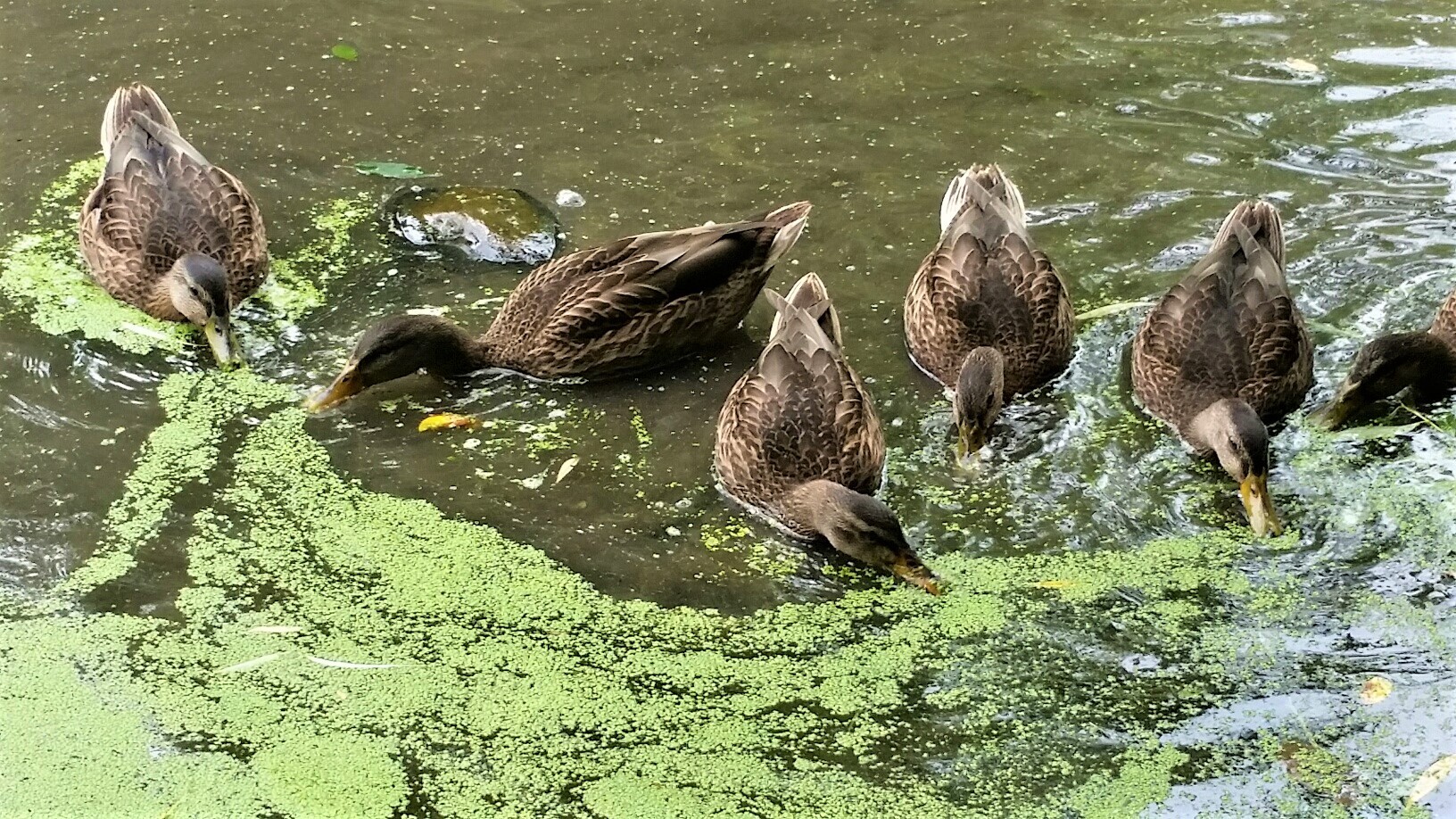Magazine
A Growing Challenge: Harmful Algal Blooms in Central Park

July 25, 2025: This article has been updated to reflect changes since its original publishing.
Each spring and summer, visitors flock to Central Park to enjoy a wide range of blooms. These blooms never fail to delight, whether it's the colorful roses in Shakespeare Garden, the cheerful cherry trees around the Reservoir, or the textured pollinator plants at the Dene Slope.
That is, except, for harmful algal blooms. Far less beautiful than the flowers Central Park is known for, these algae colonies commonly occur throughout New York City’s water bodies each summer. Over the years, the Central Park Conservancy has been diligently monitoring their growth and location in order to best inform the public and protect our visitors and wildlife.

A closeup of harmful algal blooms by Wagner Cove Boat Landing in Central Park's Lake.
Unchartered waters
Harmful algal blooms have been discovered in water bodies as large as the Pacific Ocean and as local as Central Park’s Lake. While the name speaks for itself, harmful algal blooms are not only unsightly, but can indeed be dangerous to the water bodies in which they grow. Often appearing as a murky, greenish foam on top of water surfaces, these clusters of organisms are destructive because they can lower oxygen levels in natural waters.
Like a visor blocking the sun, algal blooms prevent light from reaching fish and underwater plants, ultimately endangering them. Acting as a positive feedback loop, when these algal blooms die, the microbes that feed on them can further reduce any remaining oxygen in the water. In the most extreme cases, this complete lack of oxygen leads to “dead zones” that are uninhabitable for most wildlife.
In humans, exposure can cause eye or throat irritation, breathing difficulties and dizziness, according to NYC Parks.

Harmful algal blooms in the water along Bethesda Terrace.
Staying on track
As the caretakers of the Park for the past four decades, our staff is quite familiar with the wide range of challenges facing this ever-changing environment. The Conservancy’s Natural Areas team has been monitoring the Park’s algal blooms for many seasons and has collected a mass of testing data about the patterns and potency of these growths. With these metrics, both the Conservancy and our partner agencies are researching the top causes and potential solutions to New York's growing harmful algal bloom problem.
Natural Areas Manager Eric Whitaker explains how the team monitors all Central Park water bodies—except for the Reservoir—for harmful algal blooms on a bi-weekly basis from May to October.
Conservancy staff also inspects and remedies other health concerns involving Central Park’s water bodies. This includes removing invasive plants, clearing trash and other debris, fixing eroded areas, and assuring proper drainage. Each of these factors plays a critical role in the health of these areas, as well as the wildlife that depend on them.
Identifying the cause
Increasing global temperatures due to human-caused climate change, a rise in pollution, and a build-up of nutrients in run-off water have caused harmful algal blooms to be a growing problem around the world. Factors like the depth of water, presence of wetland shelves, and the rate at which water enters and exits all contribute to the intensity and presence of these blooms. Early studies also suggest that reducing phosphorous levels in water bodies can decrease the presence of harmful algal blooms.
It’s not all doom and bloom
Duckweed, Elodea, and water-meal, which are commonly mistaken for harmful algal blooms, are all found at the Pool in the summer. These native, aquatic plants do not pose the same threats as harmful algal blooms but can still be unsightly and smelly. According to Eric, “all of the plants we have identified in the Pool are not known to produce toxins [like cyanobacteria] and likely help prevent harmful algal blooms from occurring.”

To the untrained eye, however, it may be hard to spot the difference. Harmful blooms tend to make water look like green paint, and are present at the Lake, the Harlem Meer, and Turtle Pond. If harmful algal blooms are discovered in the Park's water bodies, the Conservancy staff is ready to notify Park patrons and put up proper signage.

When you visit the Park, look for signs that show which water bodies have harmful algal blooms.
A good sign
While the experts on the Conservancy staff work to address these challenges, there are plenty of precautions that visitors can take, too. Park-goers should never swim in or drink from the water bodies in the Park and, during bloom season, should also avoid fishing where harmful algal blooms are present.
This precaution goes for our four-legged friends, too. The toxins emitted from algal blooms can be especially dangerous for dogs so, as always, we ask our visitors to follow all dog-walking rules and etiquette, as outlined by NYC Parks. By keeping pets leashed in designated areas, visitors can maintain a safe environment for their own dogs, for other Park patrons, and for Park wildlife.
While harmful algal blooms aren’t the blooms we get most excited to talk about, they’re still a reality in Central Park and all over the world. Remember to avoid contact with these blooms and the water they live in, and to report any questions to the NYC Department of Health and Mental Hygiene by calling 311. To learn more about harmful algal blooms, visit the NYC Parks website, take heed of signs in the Park, and stay tuned to our alerts page.



